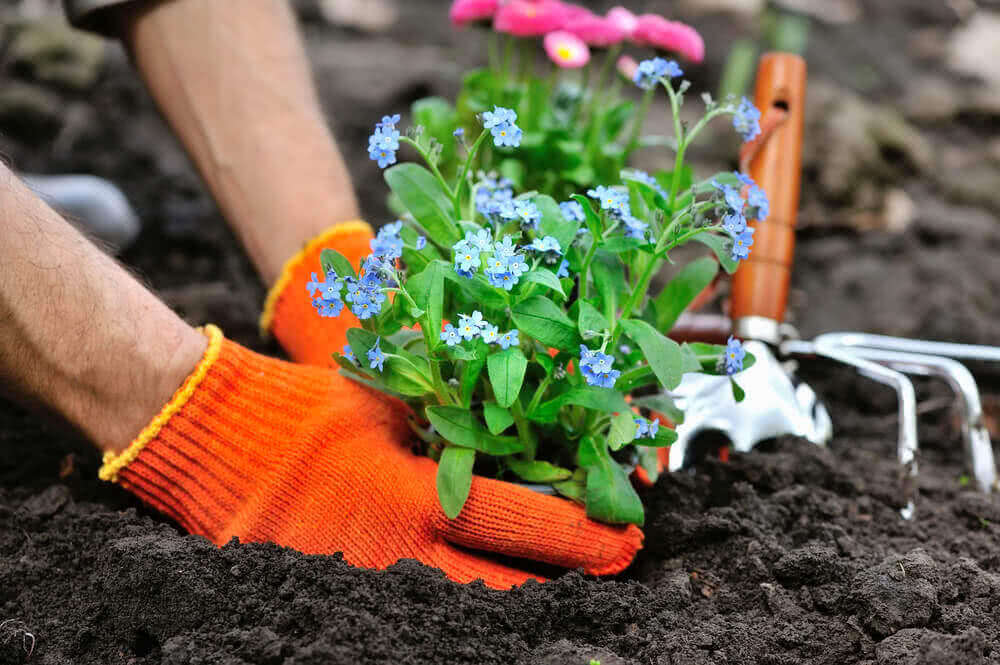The Comprehensive Guide to Gardening: Discover the Benefits of Various Styles and Methods
Horticulture encompasses a diverse range of designs and approaches, each offering distinct advantages tailored to specific preferences and environmental contexts. From the structured beauty of official yards to the organic charm of permaculture, recognizing these variations is essential for cultivating a space that not only flourishes yet likewise mirrors individual values and aesthetic appeals. Additionally, lasting techniques play an important role in improving regional ecosystems and ensuring long-term success. As we explore these various designs, it ends up being noticeable that the options made can substantially affect both the yard's health and wellness and its contribution to the surrounding environment.
Comprehending Horticulture Fundamentals
Comprehending the fundamentals of horticulture is crucial for cultivating a prospering and lasting garden. A successful horticulture undertaking begins with a solid structure of expertise concerning dirt, plant selection, and climate considerations. Healthy and balanced soil is the foundation of any garden; it provides crucial nutrients, water retention, and an environment for helpful microorganisms - Gardening. Evaluating soil pH and nutrient degrees can guide changes to enhance plant growth.
Choosing the right plants is equally crucial. Recognizing their specific demands-- such as sunlight, water, and spacing-- makes sure compatibility with the neighborhood climate and soil problems. This choice procedure should likewise consider the growth routines and lifecycle of plants, enabling a well balanced and visually pleasing garden.
Moreover, effective watering techniques are vital. Over-watering and under-watering can both bring about plant stress and anxiety and condition. Executing a routine based upon seasonal changes and plant needs can improve water efficiency.
Popular Horticulture Styles
What specifies the essence of prominent horticulture styles? Amongst the most distinguished styles is the home garden, defined by its informal layout and a lively range of flowers and veggies.
Alternatively, the official yard embodies proportion and order, usually featuring geometric patterns and carefully cut hedges. This design connects sophistication and refinement, with thoroughly picked plants that enhance an organized visual.
The Japanese yard uses a peaceful and reflective experience, utilizing natural elements like water, rocks, and plants to develop a tranquil setting. It concentrates on simpleness and equilibrium, urging consideration.
In addition, xeriscaping has actually obtained popularity, especially in dry regions (Gardening). It focuses on drought-resistant plants and efficient water usage, promoting sustainability while boosting landscape beauty
Advantages of Container Gardening
Container gardening provides a wide range of advantages that make it an attractive choice for both newbie and skilled gardeners alike. One of the main benefits is adaptability; containers can be positioned in different areas, enabling garden enthusiasts to enhance sunshine exposure and produce visually enticing plans. This adaptability makes it possible to yard in rooms where typical in-ground horticulture might not be feasible, such as terraces, outdoor patios, or metropolitan environments.
Furthermore, container gardening supplies far better control over soil conditions. Garden enthusiasts can tailor the soil mix to match specific plants, ensuring optimal drainage and nutrient schedule. This is especially helpful for people living in areas with poor or contaminated dirt.
Another considerable advantage is the lowered threat you can try this out of insects and diseases. Container plants can be checked more easily, and any kind of issues can be resolved promptly. This method can decrease the spread of intrusive types.
Lasting Horticulture Practices
Sustainable gardening practices are important for advertising environmental health and boosting biodiversity in our communities. These methods focus on environmental equilibrium, resource conservation, and using natural techniques to minimize adverse environmental effects. By using methods such as composting, garden enthusiasts can i was reading this minimize waste while enriching dirt wellness, consequently cultivating a prospering garden ecosystem.
Water conservation is another crucial element of sustainable horticulture. Strategies such as rainwater harvesting, drip watering, and making use of drought-resistant plants can substantially lower water usage while guaranteeing that plants receive appropriate dampness. Integrating indigenous plant species into yard designs sustains neighborhood wildlife and reduces the need for chemical plant foods and chemicals, which can be damaging to the environment.

Ultimately, sustainable horticulture methods not only add to much healthier gardens but likewise promote a more resilient atmosphere, supplying lasting advantages to both the garden enthusiast and the bordering neighborhood.
Tips for Successful Gardening
To cultivate a flourishing yard, gardeners should prioritize cautious planning and thoughtful execution of their gardening methods. Begin by examining the neighborhood environment and dirt conditions, as these aspects substantially influence plant selection and development. Pick next page plants that are well-suited to your environment, thinking about native types that will grow with marginal intervention.
Executing a well-structured layout is vital (Gardening). Use companion planting strategies to advertise biodiversity and natural bug control, while ensuring each plant has appropriate space for growth. This not just boosts aesthetics but likewise boosts overall plant health
Routine maintenance is key to an effective yard. Develop a consistent schedule for watering, weeding, and fertilizing. Mulching can help keep dampness and subdue weeds, while additionally including raw material to the dirt.
Routinely keeping track of plant health and wellness and growth will certainly enable for timely interventions. Be open to discovering and adjusting; gardening is a continuous process that profits from experience and experimentation.
Final Thought


In summary, the expedition of diverse horticulture designs and methods reveals their complex advantages, adding to both visual appeal and environmental wellness. Container horticulture supplies flexibility and ease of access, while sustainable practices boost ecological stewardship.